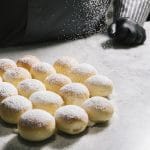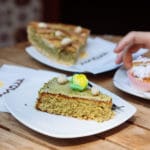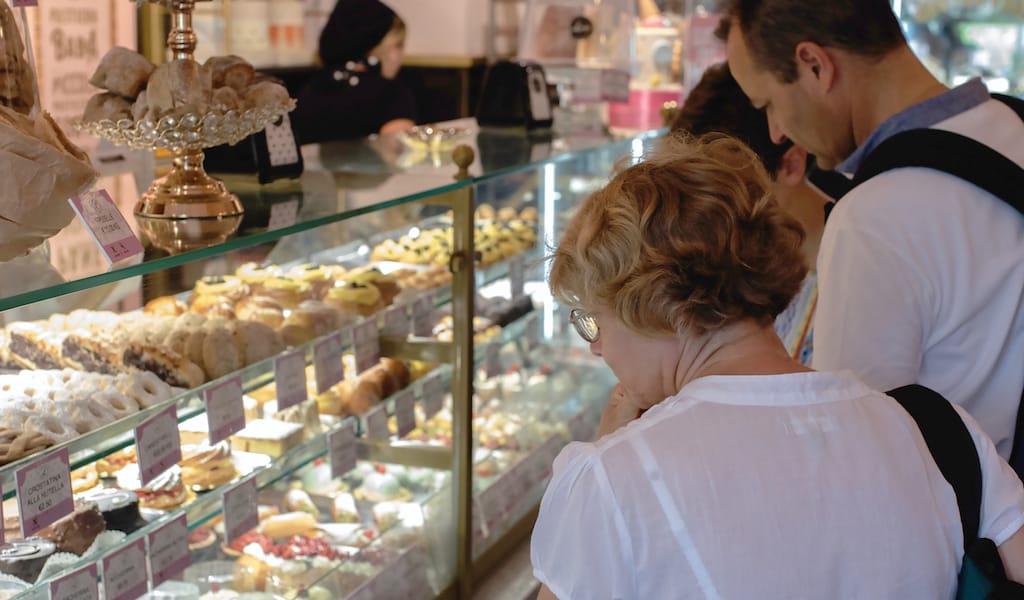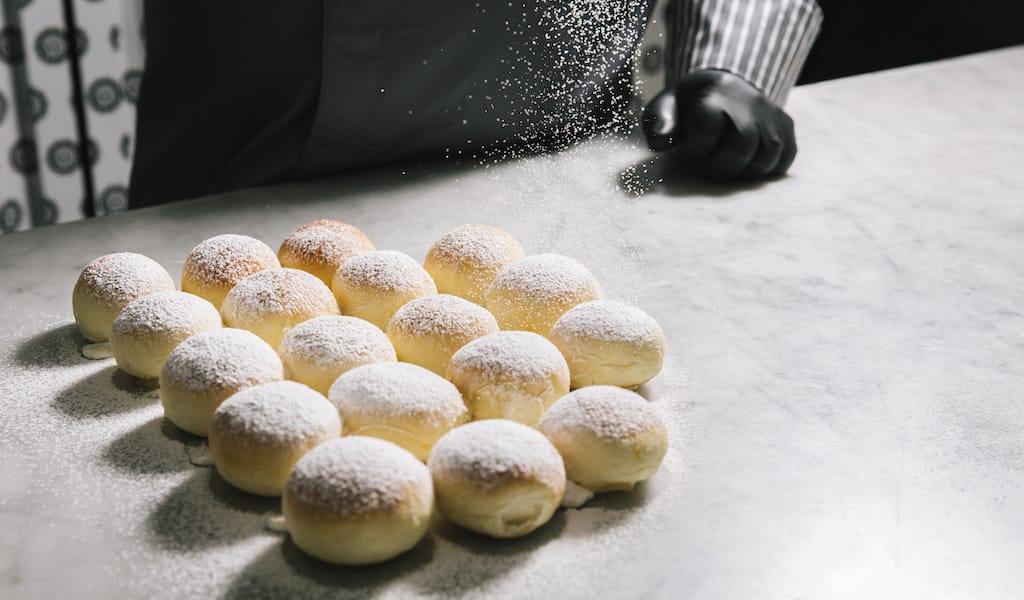The Neapolitan pastry landscape is dominated by three sweet treats: sfogliatella, a shell-shaped pastry with a variety of fillings; pastiera, a type of tart flavored with orange flower water and most commonly served at Easter; and babà, a small yeast cake soaked in a liquor syrup.
The first two cakes were born and raised in Naples, thanks to the gifted pastry-making skills of the nuns and monks in the Neapolitan convents. But babàs, although considered by many Neapolitans to be homegrown, are not, in fact, an indigenous sweet – our beloved baba was imported from France, where they were invented by a Polish gourmet.
We hate to be the bearer of bad news. For us, the babà is like a brother, our favorite morning cake. But just as we learned to accept that tomatoes, one of the essential ingredients of the Neapolitan kitchen, was imported from America around 200 years ago, so too will we stomach this tough gastronomic reality.

Stanisław Leszczyński, the 18th-century King of Poland who was said to have a refined palate, allegedly invented the babà; legend has it that a bottle of rum accidentally fell on the pastry, thus creating this rich sweet. An admirer of One Thousand and One Nights, Leszczyński named the dish after his favorite story, Ali Baba and the Forty Thieves.
The babà traveled a long and winding road to becoming one of the most famous Neapolitan pastries. In the late 18th century, Maria Carolina of Austria, the Queen of Naples as the wife of Ferdinand I, sent Neapolitan chefs to her sister Marie Antoinette in Paris to learn the techniques of French cooking. Due to this cross-pollination, many dishes that today are considered fundamental to Neapolitan cuisine had their origins in France: rice sartù (from French sourtout), potato gatò (from French gateaux) and the king of kings: the babà.
There’s a reason why Neapolitans compliment women who are beautiful, kind and intelligent by calling them a babà
In Naples, the babà quickly rose to prominence, and Neapolitan bakers perfected the time-consuming process of making this pastry by hand with high quality local ingredients. The best place to taste the height of babà perfection is at Pasticceria Capriccio in the historic city center.
The babà recipe of Raffaele Capparelli, the pastry chef at Capriccio, is top secret, handed down from father to son. While we don’t know how they do it, we do know that Capparelli has created one of the best and biggest babàs in the city: it is tall, soft and perfectly moist.
For decades, Pasticceria Capriccio has prepared this super babà. Super, because the size is so great –quality and quantity, just the way we like it. The babà may look like it is meant for more than one person, but Capriccio’s babàs are so light and airy that we can easily eat two on our own.
We recommend getting to Capriccio in the late morning, around 11:30 a.m., when the babàs are fresh out of the oven. Rita and Roberta will bathe them in the secret sauce, the babà’s defining element, which thoroughly balances rum, water and sugar. The aim is equilibrium – the babà must be perfectly moist, neither dry nor dripping. (Other worthy spots for the cake are the Capparelli and Scaturchio pastry shops.)
There’s a reason why Neapolitans compliment women who are beautiful, kind and intelligent by calling them a babà – it is the whole-package of the pastry world.
 August 19, 2019 Leopoldo Cafebar – Senza Glutine
August 19, 2019 Leopoldo Cafebar – Senza Glutine
One of the problems for travelers with celiac disease is that they often can’t taste […] Posted in Naples March 13, 2019 Pasticceria Poppella
March 13, 2019 Pasticceria Poppella
It almost never snows in Naples. Yet in the last decade, the city has seen an invasion […] Posted in Naples August 22, 2017 Mazz
August 22, 2017 Mazz
As a port city, Naples has seen several civilizations come and go over the years. The […] Posted in Naples
Published on July 18, 2017
Related stories
August 19, 2019
NaplesOne of the problems for travelers with celiac disease is that they often can’t taste local gastronomic specialties. This is particularly true in Naples, a city famed for its pizza and pastries, such as the mythical babà; pastiera, the queen of Neapolitan sweets; and the ancient sfogliatella. Until about 20 years ago, it was very…
March 13, 2019
NaplesIt almost never snows in Naples. Yet in the last decade, the city has seen an invasion of snowflakes. We’re not talking about an atmospheric phenomenon – rather, it is Pasticerria Poppella’s il fiocco di neve (“the snowflake”), a true gastronomic prodigy that has quickly become a “new classic” of Neapolitan pastry, as evidenced by…
August 22, 2017
NaplesAs a port city, Naples has seen several civilizations come and go over the years. The Normans, Swabians, Angevins, Aragonese, French, Spanish… they all had an impact on Naples’ architecture, language and, most importantly, its food. Neapolitan cuisine reflects these centuries of foreign domination, which has led to culinary cross-pollination and gastronomic innovations. While foreign…

















































































